Newts and goldfish both make great pets, especially for kids, but can the two species live together in harmony?
Essentially, goldfish can live with newts, although that arrangement has advantages and disadvantages. Some newts are semiaquatic, needing a land area in their habitat. Other newts are tropical, requiring a heated environment, whereas goldfish are coldwater fish that won’t do well if the water is too warm.
Read this guide to learn how goldfish and newts can still be tank mates despite those differences!
What are newts?
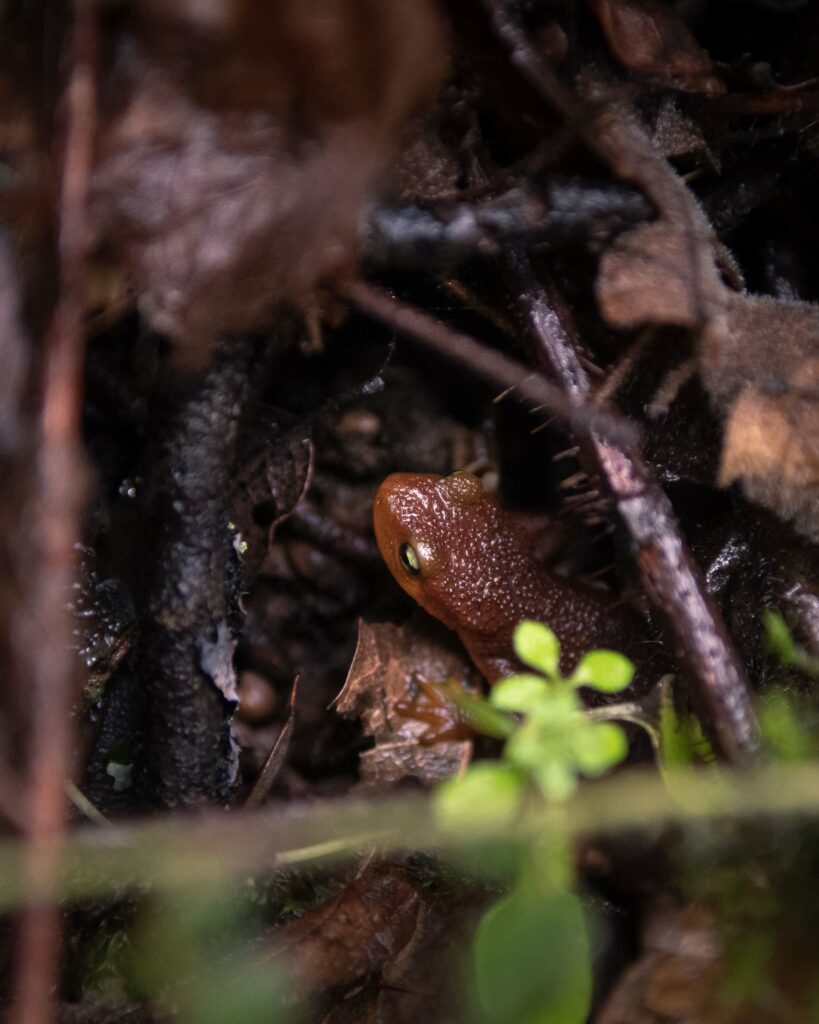
Newts belong to the same family as Salamanders and the subfamily Pleurodelinae. However, not all aquatic salamanders are classified as newts.
Around 650 species of newts can be found in many countries across North America, Asia, Europe, and North Africa. Some species are aquatic, whereas others are semiaquatic, living in water and on land.
Incredibly, these popular pets can regrow tails, lost limbs, and even internal parts of their anatomy! That ability and the newts’ amazing transformation from larvae to juveniles (efts) to adults is incredible to watch, making these cute creatures brilliant educational pets for kids.
Newts are surprisingly cheap and easy to keep but demand special attention and care, especially those species from warm and tropical climates.
Can newts live in a fish tank?
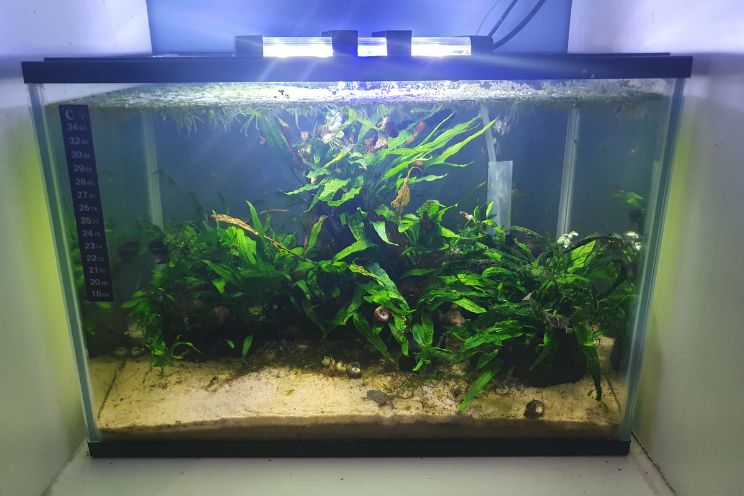
Newts cannot share a fish tank with other aquatic creatures like frogs or turtles. That can finish up with the animals trying to eat each other and can also spread disease.
Like goldfish, newts need a large tank of at least 20 gallons, and the setup varies depending on whether your newts are aquatic or semi aquatic.
Aquatic newts
Aquatic newts need a washed gravel substrate on the tank bottom, and you should bank up the gravel at the back of the aquarium to create a slope.
Add plenty of aquatic plants to the tank for a natural look and to provide somewhere for your newts to hide. Unfortunately, goldfish tend to enjoy digging in the substrate, so choose robust plant species that can be firmly anchored.
Since aquatic newts live underwater, you don’t need to worry about providing terrestrial areas for them.
Semi Aquatic newts
Semi Aquatic newts can live in water and on land, although they tend to spend most of their time in the water during the breeding season.
Essentially, you’ll need to divide your tank into two, with one half containing water and the other half filled with layers of gravel and soil topped with turf to create a land area for your newts. Dress the land side of the tank with bark, rocks, plants and hiding places.
Obviously, you’ll need a very large tank if you want to keep goldfish and newts together, as the goldfish require at least 20 gallons of swimming space and room to grow.
Keep a lid on it!
Mature Fancy goldfish don’t generally jump, but newts can climb and will readily escape if you don’t have a tightly fitting lid or cover slide for your fish tank!
Take care to block up any tiny gaps around filter housings and cabling that might enable your newts to sneak out of the tank.

Can newts live in a pond?
If you have a fish pond, you’ll probably find that newts have already colonised it! That’s good news, as when wildlife decides to move in, that shows the pond habitat is healthy and thriving.
However, newts and goldfish both eat invertebrates, slugs, insects, tadpoles, worms, and the like. Unfortunately, since goldfish are considerably larger and faster than newts, it’s probable that the newts will go hungry or even starve.
You should never try to introduce newts to your fish pond. There are a lot of wild newts, and introducing a new, potentially invasive species of these creatures could cause issues with the natural population. In fact, newts that are not native to your region and its climate would probably not survive in a pond anyway.
Do newts eat goldfish?
Newts are too small to pose a threat to an adult or juvenile goldfish.
However, if your goldfish spawn in your tank or pond, it’s likely that the newts will eat the tiny goldfish fry. Newt tadpoles are too small to eat goldfish fry.
Do goldfish eat newts?
In theory, a very large adult goldfish could eat a newt, although that’s pretty unlikely, provided the goldfish get plenty to eat and aren’t hungry. That said, Koi will readily take small newts, which is why it’s best not to mix the two in your garden pond.
The biggest problem with keeping these two species together is that the goldfish will eat your newts tadpoles.

What should you feed pet newts?
Most newt species are carnivorous creatures that prey on live food in the wild environment. In captivity, you can feed your newts on live foods such as earthworms, insects, mealworms, fruit flies, crickets, daphnia, blood worms, moths and brine shrimp.
You can find some of these creatures in your garden pond, buy them online, or get them from your local pet store if they have a reptile department. Some owners like to raise their newt food from larvae, which can save some cash and ensure that the food you offer your pets is disease-free.
Frozen newt food is also available, which is just as nutritious and is easier to store than live food.
Mealtime clashes
Goldfish eat the same live diet as newts, which can lead to clashes in a shared tank. Goldfish are larger and faster than newts, and that could lead to your newts missing out.
It’s best to feed newts every two or three days, ideally at the same time each week. However, that can cause problems in a tank with goldfish as the fish will require feeding more frequently, which could lead to you overfeeding your newts.
Plants
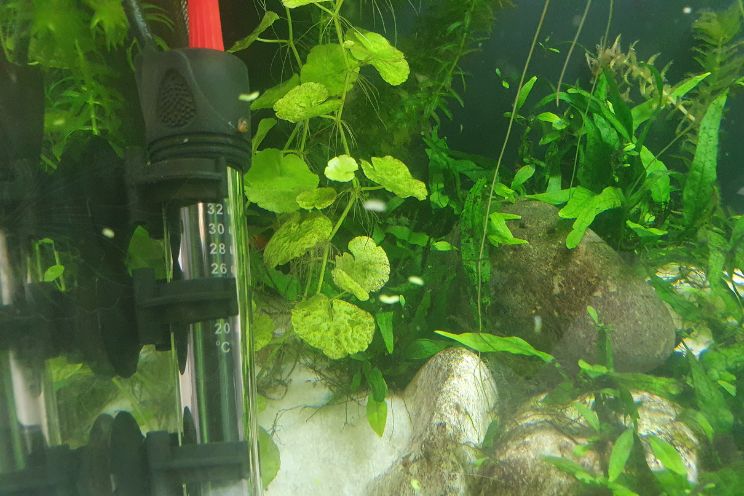
Most species of newts do not eat plant matter, algae, or veggies; feeding them those kinds of food can cause serious health problems. Goldfish, on the other hand, eat both!
Before you decide what kind of newts to bring home, do plenty of research so that you know exactly how to care for them and what kind of foods they need.
What type of goldfish can live with newts?
The type of goldfish that can live with newts depends on whether you want to keep your newts in a tank or a pond.
You could keep Fancy goldfish with newts if you have a large fish tank. Fancy goldfish, like Orandas, are slow swimmers and won’t hassle the newts. Most Fancies don’t grow larger than 8 inches, making them too small to eat the newts. That said, the hardier species of Fancy goldfish can do well in a pond.
In a pond situation, Comet and Shubunkin goldfish grow much larger than Fancies, reaching 14 inches long or more in some cases. Those goldfish types are fast, agile swimmers that are more than capable of catching and eating a tiny newt.
So, if you want to keep the two species together in the same habitat, your best choice of goldfish is one of the Fancy types rather than the long-bodied speedsters!
How to keep newts and goldfish together
As mentioned above, there are many different species of newts, some completely aquatic and others needing land access.
If you choose a semi-aquatic species to keep with goldfish in a tank, the newts will be able to get out of the water to get away from the fish when they want to. However, you’ll still need plenty of dense cover in the water for the newt tadpoles to hide in.
Newts and Goldfish in a pond
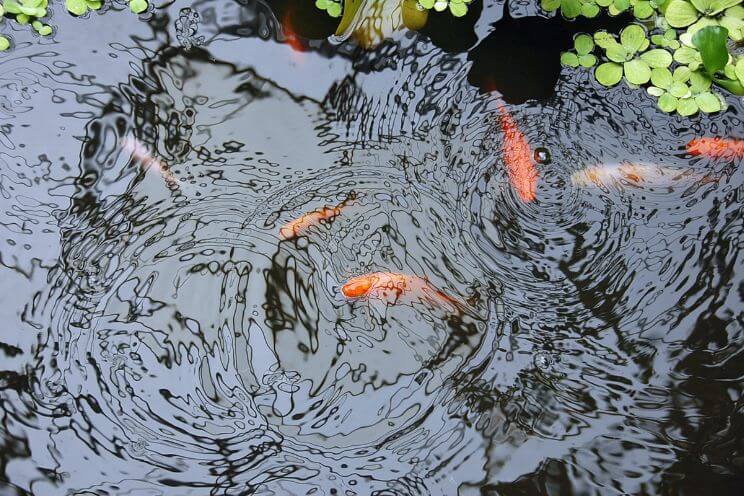
If you have newts in a goldfish pond, you’ll need to have one area of the pond that’s particularly densely planted. Thick vegetation will keep the fish out and provide the newts and their tadpoles with somewhere to hide.
Try to leave a blanket of floating water weed in the pond where the newts can lay their eggs. The weed helps to shelter the newts and protects the eggs from greedy goldfish that would otherwise try to eat them.
Newts and Goldfish in a tank
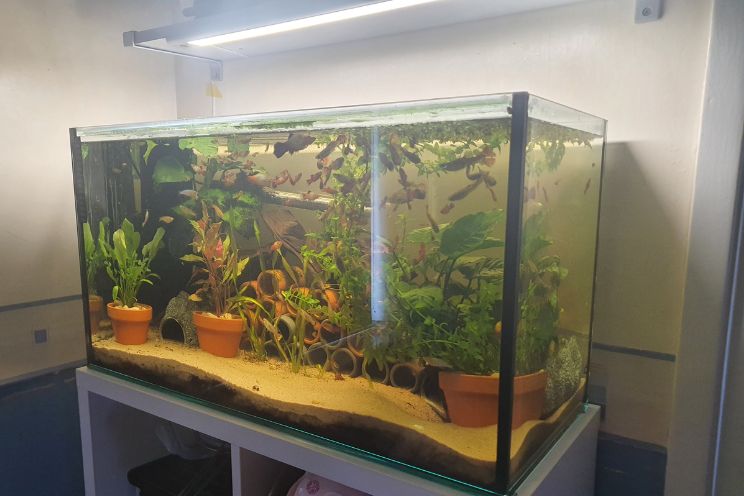
You’ll need a tank of at least 20 gallons in size to accommodate goldfish and newts.
Newts and goldfish need a freshwater habitat, and the tank should have a tight-fitting lid to prevent the newts from climbing out.
Add gravel and rocks to the tank so that your newts have plenty of hiding places, and fill the tank with lots of dense, amphibian-safe plants. Your goldfish will dig and nibble on the plants, so you must choose species that can’t be easily uprooted.
Don’t use fertilisers or chemicals in your fish tank since they can be toxic to newts. Your plants should be able to derive the nutrients they need from the nitrates in the water, so you shouldn’t need to supplement them.
Goldfish and coldwater newt species both enjoy similar water temperatures, so you won’t need a heater for your tank.

Where can I buy Newts?
Do not take newts from the wild environment. Some newt species are protected by law and cannot be purchased or kept without a licence.
However, you can buy regular newts from pet stores, dealers, and exotic breeders. When choosing newts to live with goldfish, ensure you pick a coldwater species.
We recommend buying a pair of newts since, like goldfish, they prefer to live with companions and have a long lifespan of up to 15 years. In addition, you’ll need a pair of newts if you want to try breeding them.
Pros and cons of keeping newts and goldfish together
So, it is possible to keep newts and goldfish together, although that arrangement has some downsides.
Pros
- Goldfish and newts share a similar diet
- Goldfish and some newt species both enjoy a coldwater environment
- Both species are peaceful and won’t fight
- Newts and goldfish like a similar tank setup
- Both species need a similar tank size
Cons
- Goldfish will eat newt eggs and tadpoles
- Newts will eat goldfish eggs and tiny fry
- Both species produce lots of waste, so you’ll need a powerful filtration system, and tank maintenance can be time-consuming
- Goldfish could outcompete the newts for food
Final Thoughts
Did you enjoy our guide to keeping newts and goldfish together? If you did, please share the article!
Newts can make great pets for kids! These little creatures are easy to keep, they’re fun to watch, and you can breed them. However, although, in theory, goldfish can live with newts, they don’t make the best tank mates.
Provided you choose a coldwater aquatic newt species, they can share a large tank or pond with goldfish. However, the goldfish will eat the newt’s eggs and tadpoles and could outcompete the newts for food. In addition, large pond goldfish species are not averse to eating small newts, and many hobbyists report that the newts have abandoned their ponds, apparently driven away by the fish.
Do you have newts and goldfish? How does that work for you? Tell us in the comments box below!
